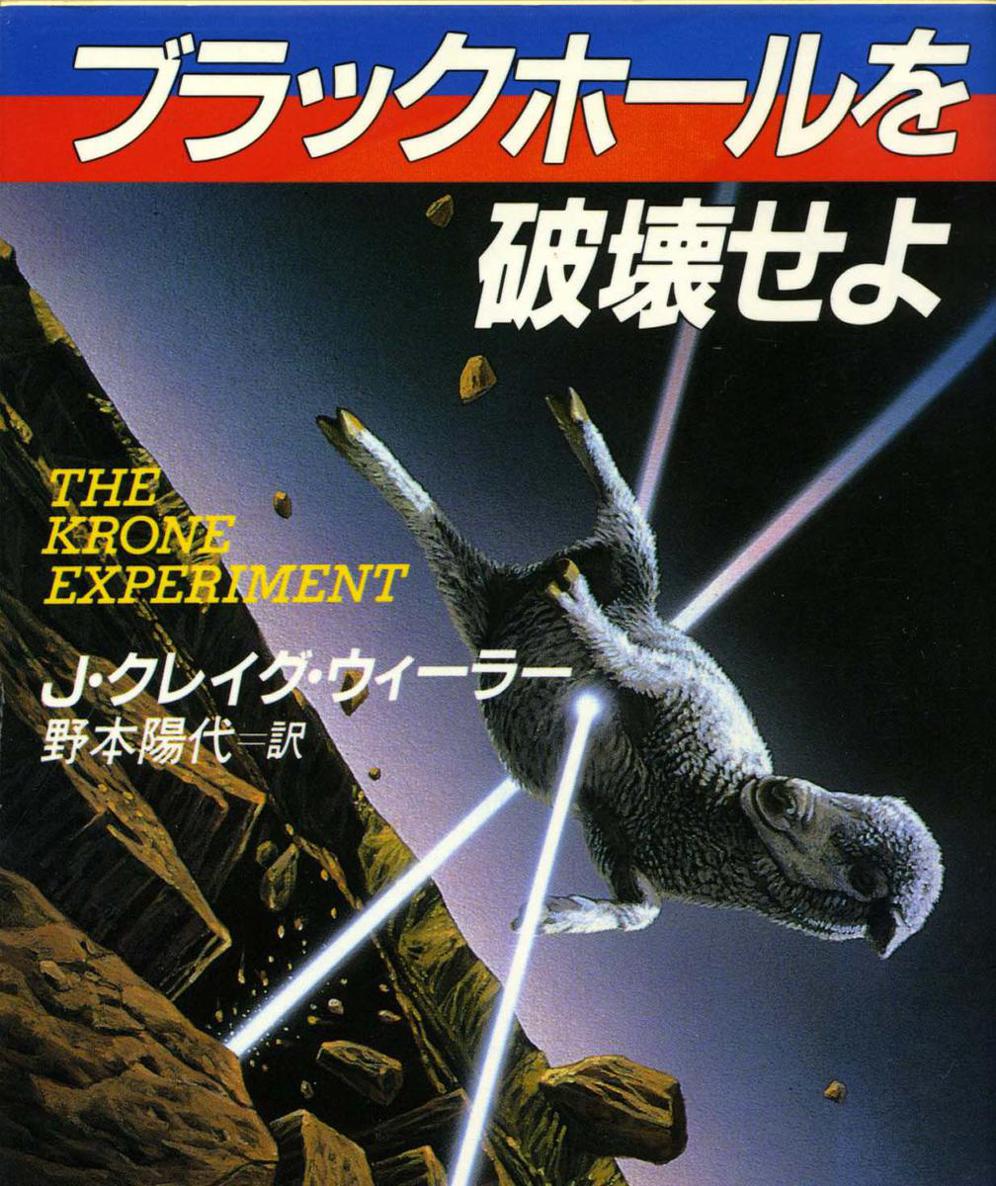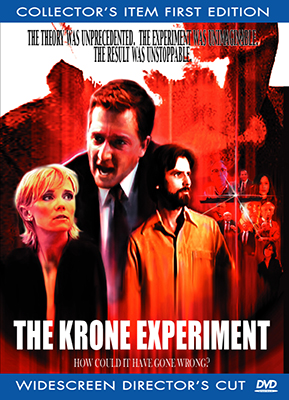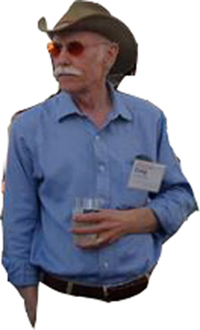The Krone Experiment (53 page)
Runyan watched quietly for several minutes
and then announced, “It’s 5 o’clock. Our ride leaves in ten
minutes. Let’s button it up.”
The operators glanced at him and then
finished their tasks, logging out, turning their functions over to
the computer and the remote monitors. One by one they sighed,
pushed back from their terminals and left the room. The last one
leaned over and gave his terminal a perfunctory kiss and a pat.
Runyan smiled, clapped him on the shoulder in sympathy, and
followed him out.
They gathered by the pad and the helicopter
dropped down out of the dark sky right on schedule. Runyan knew
each of the men intimately, but went through the formality of
checking each off on a list as they boarded the helicopter,
attesting that they were safely off the platform. Then he climbed
aboard himself and didn’t look back.
Back on the Bradford, Runyan stopped in the
galley to choke down a doughnut and sip another cup of coffee. Then
he joined the gathering crowd on the deck, their backs to the rosy
dawn, their eyes on that which they couldn’t see, a hundred miles
away across the flat ocean expanse. Runyan sought out Korolev. The
Russian turned to face him, and they shook hands mutely, somberly,
and then leaned on the rail staring like all the others.
After a while Korolev grumbled.
“I saw a report the other day.”
Runyan listened in silence.
“Seismic activity along the trajectory,” the
Russian continued. “Just statistical. Not a strong signal. But
real, I think.”
He took a sheet of note paper from his pocket
and slowly and methodically tore it into strips, and the strips
into bits. When he finished, he spoke again.
“A definite increase in Earthquake activity.
No big quakes, but a larger number of small tremors. A weakening of
the Earth. The first small signs.”
Runyan nodded.
“Nervous?” He asked, gesturing at the scraps
in the Russian’s gnarled fist.
“Yes,” Korolev smiled, “but no, this is
something else. A little trick your Mr. Fermi taught us years ago.
The Manhattan Project. If we see nothing, we have a dud. If it
works,” he lifted his fistful of confetti, “we have a little hint
of how well.”
At a pre-arranged time they put on dark
goggles. All was silent on the Bradford. Runyan thought briefly of
his wife.
Then a new star was born.
After the initial flash, Runyan whipped off
his goggles.
The fireball grew rapidly, expanding along
the horizon, blasting upward. Outward it rushed, silently,
painfully white, looming, violent, menacing. No, Runyan heard
himself telling it, no, that’s big enough. He had to crane his neck
to see the top. No. No. It was impossibly big, and still it spread,
implacable, ravishing the sky. They were safe at a hundred miles,
Runyan thought, they had to be. But in a detached way he could feel
a primal force gathering in his belly, forcing a scream toward his
throat.
Then it paused, sated, halted its outward
rush, and began to billow even taller.
They watched quietly, all diminished by the
horrifying splendor. After long minutes, Runyan could make out the
shock ripping toward them at unbelievable speed across the surface
of the water.
“Hold on,” he heard Korolev mutter.
The Russian grabbed the railing with his free
hand. His lips moved as he counted to himself, watching the shock
front and tracing its path. Then he threw the shards of paper in
the air between himself and Runyan. The shock arrived with the roar
of an express train, and the bits of confetti leapt sideways.
Korolev watched them continue their wafting fall to the deck.
“It was a big one, Alex,” the Russian growled
over the continuous rumble, “a very big one. Pray the recoil was in
the right direction.”
1
###
The Krone Experiment
was published in original hardcover in November
1986 by Pressworks, Inc., Dallas. The U.S. paperback appeared in
November 1988 as an Onyx imprint of the New American Library, New
York. A British hardback edition was published in July 1988 by
Souvenir Press, London, a Japanese translation in August 1988 by
Kobun Sha, Tokyo, and a British paperback edition in June 1989 by
Grafton, London. The Krone Experiment is available in print
from
http://www.thekroneexperiment.com/.
Look for the sequel,
Krone
Ascending
, in E-book format. Follow
The Krone Experiment
series on
Facebook
.
Here is the cover from the Japanese edition,
an orbiting, laser-blasted sheep, that combines several of the
technical themes in the book in a stupifyingly inappropriate
combination.

The Krone Experiment
was made into an independent film in Austin,
Texas. The movie is available on DVD at
http://www.thekroneexperiment.com/.
The author plays the perpetrator of The Krone
experiment, who is mostly brain dead throughout the film. Look for
vignettes showing the film’s characters 10 years later, a bridge
to
Krone Ascending
,
on YouTube. Follow
The Krone
Experiment
on
Facebook
.


J. Craig Wheeler is the
Samuel T. and Fern Yanagisawa Regents Professor of Astronomy at the
University of Texas at Austin, where he is a member of the Academy
of Distinguished Teachers at the University of Texas and recipient
of a Regents Outstanding Teaching Award from the University of
Texas System. His research interests are supernovae, black holes,
gamma-ray bursts and astrobiology. He has published about 300
papers in refereed journals, numerous conference proceedings, and
edited five books. He served on the Space Studies Board of the
National Research Council from 2002–2006 and was co-Chair of the
NRC Committee on the Origin and Evolution of Life from 2002–2005.
He served a two-year term as President of the American Astronomical
Society from 2006 to 2008. Follow J. Craig Wheeler on
Twitter
@ast309
.
In addition to
The Krone Experiment
and
its sequel,
Krone
Ascending
, he has plans for a third book in
the trilogy. His popular-level book,
Cosmic Catastrophes: Supernovae, Gamma-Ray Bursts and
Adventures in Hyperspace
(Cambridge
University Press 2000) won an award in a University of Texas
faculty book competition. The second edition,
Cosmic Catastrophes: Exploding Stars, Black Holes, and
Mapping the Universe
(Cambridge University
Press 2007), was named one of the top astronomy books of 2007 by
CHOICE magazine. This book also appears in a Polish
translation,
Kozmiczne Katastrofy,
and a Hungarian translation,
Kozmikus Katasztrófák
.
See
http://ebooks.cambridge.org/ebook.jsf?bid=CBO9780511536625
.